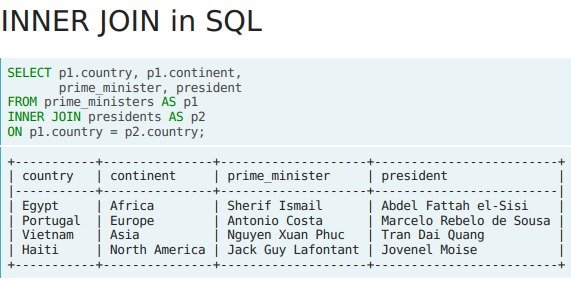

If we use the asterisk (*) in the select list, the result will consist of all the common columns. For example, the TABLE1 has 100 rows and TABLE2 has 100 rows, the result will be 100 x 100 = 10000 rows. Suppose, TABLE1 has ‘a’ rows and TABLE2 has ‘b’ rows, the result will be axb rows. If we perform a CROSS JOIN of two tables TABLE1 and TABLE2. Predicates are used in a SELECT statement’s WHERE clause or HAVING clause to decide which rows are compatible with a particular query.

It is dissimilar from other join clauses for example LEFT JOIN and INNER JOIN, the CROSS JOIN is not having a join predicate.Ī predicate is a condition expression that will evaluate a boolean value, either true or false. Basically, it allows us to combine all the probability of the multiple tables and will return the output, which contain each row from all the selected tables. With the help of this join in Postgresql, we can make a Cartesian Product of rows in more than two tables.
Postgresql inner join full#
Postgresql join types full outer join Cross join Let’s check the output for the above query. ON street_bikes_names= sports_bikes_names SELECT t_ID, street_bikes_names, p_ID, sports_bikes_names The below command is used to represent the working of the Full Outer join to join the Best_motorcycle table with the Sports_motorcycle table. The syntax for the full outer join: SELECT columns This type of join in Postgresql returns all rows from the left side of the table and right side of the table with a null value in the place where the join condition is unmatched. If these values are the same, then the right join will generate a new row, which will carry the columns from both tables Best_motorcycle and Sports_motorcycle.Īssuming that if the values are not the same, then the right join also produced a new row, which involves the columns from both tables and enhances it to the output. In the above output, the RIGHT JOIN equates each value in the Sports_bikes_names column of every row in the Sports_motorcycle table with each value in the street_bikes_name column of all rows in the best_motorcycle table. Now we will check the output of the above query. INSERT INTO Sports_motorcycle (P_ID, Sports_bikes_names) INSERT INTO Best_motorcycle (T_ID, Street_bikes_names) Sports_bikes_names VARCHAR (250) NOT NULL) Street_bikes_names VARCHAR (250) NOT NULL) In the example shown below, we will use the CREATE command to create two tables i.e. Here, we will be creating and inserting two different tables where we will perform actions on several types of joins. Let’s understand joins by an example.įirstly we will create two tables. We will further explain these types in the next topic.

Different types of joins in Postgresql are inner join left join, right join, full outer join, cross join, natural join, and a special kind of join known as self-join.


 0 kommentar(er)
0 kommentar(er)
